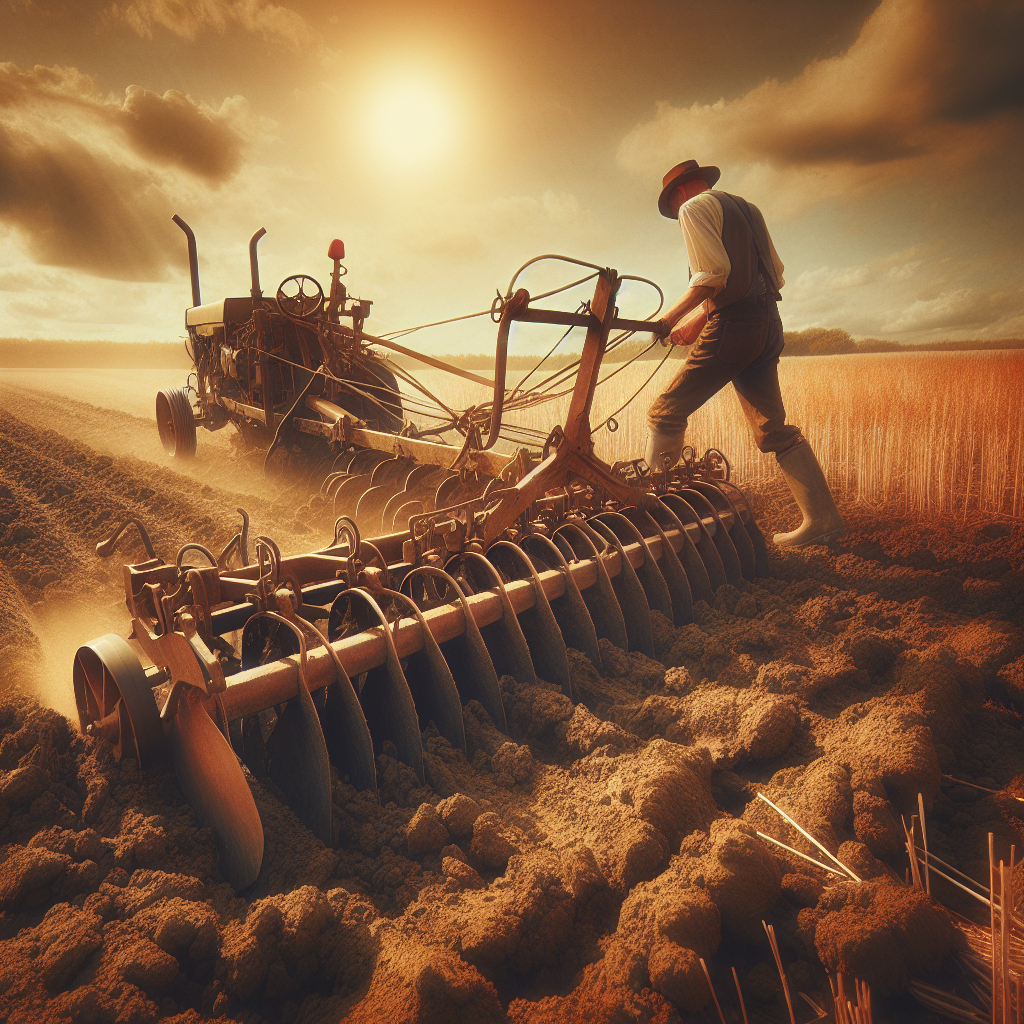Plowing loamy soil effectively is crucial for achieving optimal crop growth. Loamy soil, known for its balanced texture and fertility, requires specific techniques to maximize its potential. This article will guide you through the best practices for plowing loamy soil, ensuring your crops thrive.
Understanding Loamy Soil
Before diving into the plowing techniques, it’s essential to understand the characteristics of loamy soil. Loamy soil is a balanced mixture of sand, silt, and clay, typically containing about 40% sand, 40% silt, and 20% clay. This composition provides excellent drainage, nutrient retention, and aeration, making it ideal for most crops.
Benefits of Loamy Soil
Loamy soil offers several advantages for crop growth:
- Good Drainage: The sand component ensures that water drains well, preventing waterlogging and root rot.
- Nutrient Retention: The silt and clay components help retain essential nutrients, providing a steady supply to plants.
- Workability: Loamy soil is easy to work with, making it simpler to plow and prepare for planting.
- Aeration: The balanced texture allows for adequate air circulation, promoting healthy root development.
Preparing for Plowing
Proper preparation is key to successful plowing. Here are the steps to follow:
Soil Testing
Conduct a soil test to determine the pH level and nutrient content of your loamy soil. This information will help you make informed decisions about any necessary amendments, such as lime or fertilizer, to optimize soil conditions for your crops.
Clearing the Field
Remove any debris, rocks, or weeds from the field. This will prevent damage to your plowing equipment and ensure a smooth plowing process. Additionally, clearing the field helps reduce competition for nutrients and water, giving your crops a better chance to thrive.
Choosing the Right Equipment
Select the appropriate plowing equipment based on the size of your field and the type of crops you plan to grow. Common options include moldboard plows, chisel plows, and disc plows. Each type has its advantages, so choose the one that best suits your needs.
Plowing Techniques
Once you have prepared the field, it’s time to start plowing. Follow these techniques to ensure optimal results:
Setting the Plow Depth
Adjust the plow depth to match the root zone of your crops. For most crops, a depth of 6-8 inches is ideal. This depth allows for proper root penetration and access to nutrients while avoiding the disruption of deeper soil layers.
Plowing Patterns
Use a systematic plowing pattern to ensure even coverage and avoid compaction. Common patterns include:
- Contour Plowing: Plow along the contours of the land to reduce soil erosion and water runoff.
- Strip Plowing: Alternate plowed and unplowed strips to minimize soil disturbance and maintain soil structure.
- Cross Plowing: Plow in perpendicular directions to break up soil clumps and improve aeration.
Timing
Plow your field at the right time to maximize the benefits. Ideally, plow when the soil is slightly moist but not waterlogged. This condition allows for easier plowing and reduces the risk of soil compaction. Avoid plowing when the soil is too dry, as this can create large clods that are difficult to break down.
Post-Plowing Practices
After plowing, it’s essential to take additional steps to prepare the soil for planting:
Harrowing
Use a harrow to break up any remaining clods and create a fine, even seedbed. Harrowing also helps incorporate organic matter and amendments into the soil, improving its structure and fertility.
Soil Amendment
Based on your soil test results, add any necessary amendments, such as compost, manure, or fertilizers. These additions will enhance the nutrient content and overall health of your loamy soil, providing a strong foundation for your crops.
Cover Crops
Consider planting cover crops, such as clover or rye, to protect the soil from erosion and improve its fertility. Cover crops also help suppress weeds and enhance soil structure, making it easier to manage your field in the long term.
Conclusion
Plowing loamy soil for optimal crop growth requires careful preparation, the right equipment, and effective techniques. By understanding the unique characteristics of loamy soil and following the best practices outlined in this article, you can create an ideal environment for your crops to thrive. Remember to test your soil, choose the appropriate plowing pattern, and take post-plowing steps to ensure the health and productivity of your field. With these tips, you’ll be well on your way to achieving a bountiful harvest.
